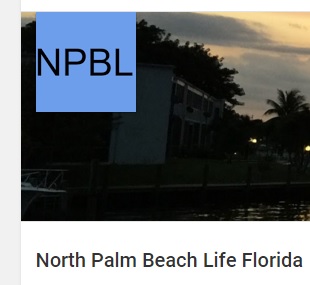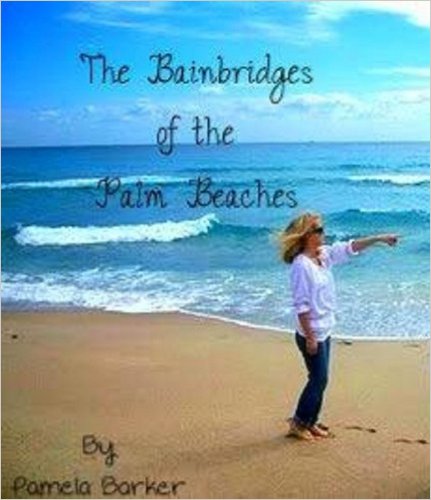 Brightline teammates, in coordination with City of Miami Police officers, provided Overtown residents with education on rail safety at an event this past August (Credit: Brightline) Brightline teammates, in coordination with City of Miami Police officers, provided Overtown residents with education on rail safety at an event this past August (Credit: Brightline) (Press Release)_West Palm Beach, Fla. – Sept. 25, 2017 – South Florida’s passenger and freight rail providers are highlighting the importance of being safe around railroad tracks during the first annual National Rail Safety Week taking place September 24 through 30. National Rail Safety Week is being spearheaded by Operation Lifesaver, Inc. (OLI) in partnership with the U.S. Department of Transportation. With two active rail corridors traversing the region, the Florida East Coast Railway (FECR) and the South Florida Rail Corridor, it is always the right time to emphasize ways to be safe. Brightline, the only privately-funded express intercity passenger rail system in the country, Tri-Rail, South Florida’s public commuter rail service, Florida East Coast Railway, the sole freight provider along the east coast of Florida, and the three South Florida Metropolitan Planning Organizations are partnering to spread the word about ways to keep you, your friends and family safe around railroad tracks. Currently, both passenger and freight service operate on the South Florida Rail Corridor, which runs primarily to the west of I-95 between Mangonia Park in Palm Beach County and the Miami Intermodal Center near the Miami International Airport. The Florida East Coast Railway operates 14 to 15 freight trains on its corridor, which is located along the eastern portion of the counties and parallels US 1 or Dixie Highway in most places. Brightline also operates on the FECR and will continue testing its trainsets as it gets closer to launching passenger service later this year. Communities along each corridor have worked or are working to establish quiet zones, which means neither freight nor passenger trains will be required to blow their horns as they approach at grade crossings due to the installation of supplemental safety measures. However, a train engineer may blow the horn if there is an emergency on the tracks, like a trespasser or a vehicle. With the implementation of quiet zones, stakeholders along each corridor are strongly encouraged to make smart decisions, like staying off the tracks and not wearing headphones or being distracted. While vehicle-train collisions in the U.S. have dropped by 83 percent in the last four decades, there are still more than 2,000 vehicle-train collisions annually across the U.S., and last year more than 900 injuries and fatalities occurred to people walking, playing or taking photos on train tracks. These incidents are devastating to families, communities and train crew members – and they are often preventable. Making the right decisions near railroad tracks can truly be the difference between life and death, today – and every day. Keep yourself, family and friends safe by following Operation Lifesaver’s top five rail safety tips: 1) Look and listen for a train as you approach all railroad crossings - obey all signs, warning lights and gates. 2) Trains are quieter and faster than you think - never try to beat a train. 3) Because of their size and weight, it can take a mile or more to stop a train. 4) Always expect a train on any track; avoid distractions when you approach a crossing. 5) Railroad property is private property. Walking on the tracks is illegal and dangerous. More information on National Rail Safety Week can be found here. Follow Rail Safety Week on social media with the hashtags #USRailSafetyWeek and #RailSafety. Comments are closed.
|
ABOUTExploring what to see and do in North Palm Beach and the South Florida area. Your hosts are Pam and Gerry Barker. GERRY PRONOUNCED GARYArchives
July 2024
YouTube ChannelCategoriesListen to Chapter One of "Panama Palmer"
|
- Home
- Cruise/Travel
- Gigi in the 561
- Blogs
- Video
-
Explore
- Snaps >
- Island Destinations
- October Odyssey >
- Pam - Traveling in Style
-
Road Trip!
>
- Road Trip! -- Tucumcari, New Mexico
- Road Trip! -- The Painted Desert
- Road Trip! - Sedona, Arizona
- Road Trip! - Sedona Wineries
- Road Trip! Tonto Natural Bridge State Park
- Road Trip! - Mogollon Rim
- Road Trip! - Verde Canyon Railroad
- Road Trip! - Jerome, Arizona
- Road Trip! - California
- Road Trip! - Palm Springs Celebrity Tour
- Road Trip! - Palm Springs Aerial Tramway
- Road Trip! - Festival in Palm Springs
- Road Trip! - Willcox, Arizona and Apple Annie's Orchard
- Road Trip! Willcox Wineries
- Road Trip! Chiricahua National Monument
- Road Trip! Tombstone, Arizona
- Tombstone, Part Two
- Road Trip! - Epilogue
-
Traveling With Joe
>
- Beartooth Highway
- North Cascades National Park
- A Visit to the Philippines
- Grand Canyon National Park
- Glacier National Park
- Yellowstone National Park
- Hiking in Bear Country
- Crater Lake National Park
- Albuquerque Balloon Fiesta
- The Kerrville Folk Festival
- Building Hope in the Rio Grande Valley
- Yellowstone Camping Tales
-
Unknown Yellowstone
>
- Unknown Yellowstone - Heart Lake
- Unknown Yellowstone - Summit Lake
- Unknown Yellowstone - Shoshone Lake
- Unknown Yellowstone - Grizzly Lake
- Unknown Yellowstone - Riddle Lake
- Unknown Yellowstone - Pelican Cone
- Unknown Yellowstone - Mt. Washburn
- Unknown Yellowstone - Specimen Ridge
- Unknown Yellowstone - Avalanche Peak
- Unknown Yellowstone - Divide Creek
- Contact
- Search
|
© COPYRIGHT 2024 ALL RIGHTS RESERVED.
|







 RSS Feed
RSS Feed


